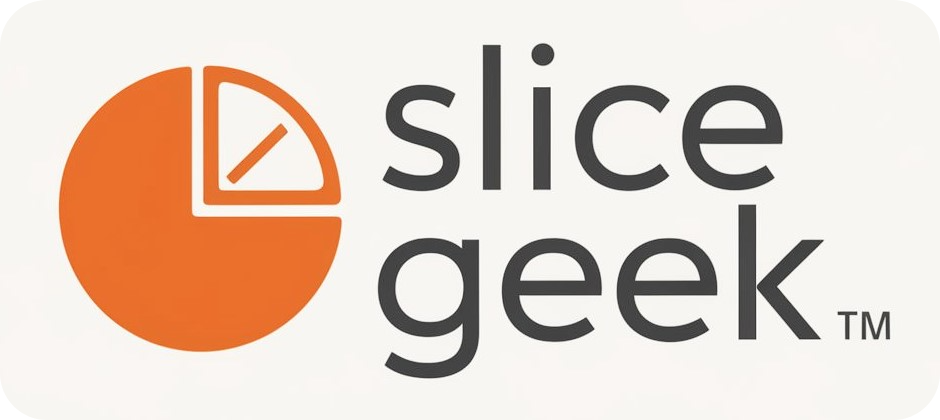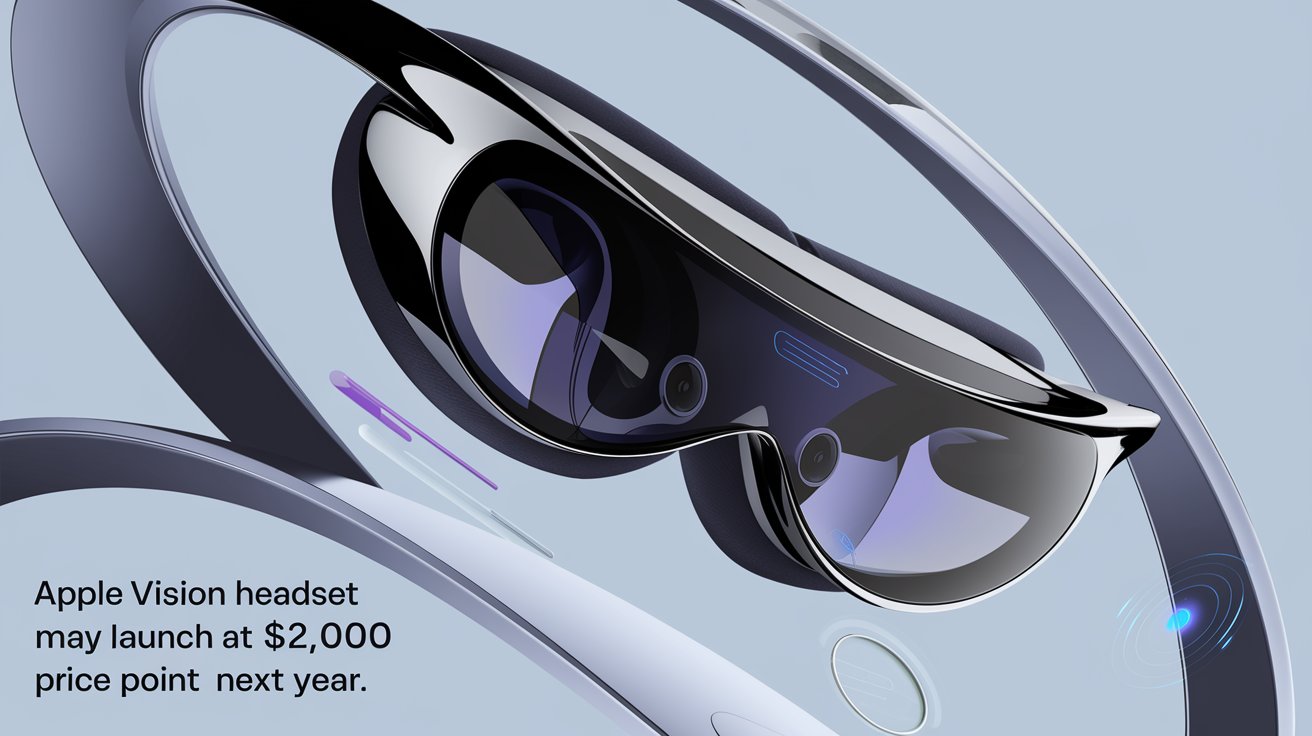The tech world is buzzing with rumors about Apple’s possible release of a new augmented reality (AR) and virtual reality (VR) device: the Apple Vision Headset. If the reports are accurate, this highly anticipated headset could hit the market with a price tag around $2,000, placing it in the high-end, premium segment of the AR/VR market. As with any major Apple product, excitement has been building for what could be a revolutionary new device that may further establish Apple’s dominance in the consumer electronics space.
This blog explores the potential features, design, use cases, and market impact of the Apple Vision Headset, as well as how it could reshape the future of mixed reality technologies. We’ll also dive into why Apple is targeting the premium AR/VR space and how this fits into the broader context of its product strategy.
What is the Apple Vision Headset?
The Apple Vision Headset, rumored to be in development for several years, is expected to be Apple’s entry into the rapidly growing AR and VR markets. The device is anticipated to be a mixed reality headset, meaning it will combine elements of both augmented and virtual reality to offer users immersive experiences.
Unlike traditional VR headsets that completely immerse the user in a virtual environment, a mixed reality device allows users to interact with the real world while overlaying digital content. Apple’s headset is expected to offer a seamless blend of the digital and physical worlds, enhancing user experiences in gaming, work, social interactions, and entertainment.
While Apple has not officially confirmed any specific details about the Vision Headset, analysts and insiders suggest that it will be equipped with advanced features such as high-resolution OLED displays, eye-tracking technology, hand gesture recognition, and spatial audio. These features would allow for an immersive and interactive experience that integrates smoothly with the Apple ecosystem, such as iPhones, Macs, and Apple Watches.
Apple’s Strategic Push into AR and VR
Apple has been quietly laying the groundwork for a major push into AR and VR for years. While some tech companies have taken a more aggressive approach in this space—such as Meta with its Oculus devices—Apple has played a longer game, steadily investing in ARKit, a software development framework for AR applications, and improving the AR capabilities of its iPhones and iPads.
Apple CEO Tim Cook has repeatedly expressed his excitement about the future of AR, even referring to it as a “profound technology” that will become integral to daily life. AR, in Cook’s view, could be as transformative as the smartphone itself. Apple’s Vision Headset could represent the culmination of this vision, introducing AR and VR technologies to mainstream consumers in a way that feels natural and integrated into their everyday lives.
Apple’s late entry into this space doesn’t signal reluctance, but rather a calculated move to launch a polished product with groundbreaking features. Apple has a history of entering markets late, only to dominate them by offering superior user experiences—think of the iPod, iPhone, and Apple Watch. The Vision Headset may follow a similar trajectory, especially if it offers a unique combination of performance, design, and integration with the Apple ecosystem.
Key Features and Technologies
Though Apple has kept most details about the Vision Headset under wraps, several features and technologies are expected to set it apart from existing AR/VR devices.
1. High-Resolution Displays: Apple’s Vision Headset is rumored to feature high-resolution OLED displays or even microLED technology, offering users crystal-clear visuals with vibrant colors and deep contrasts. This would make virtual environments appear more lifelike and AR experiences more immersive by overlaying high-quality images on the real world.
2. Eye-Tracking and Hand Gesture Recognition: To offer a more intuitive experience, the headset is likely to feature eye-tracking and hand gesture controls. Eye-tracking technology would allow the device to understand where the user is looking, optimizing display performance and improving interactivity. Meanwhile, hand gestures could enable users to interact with digital objects in AR without the need for physical controllers, making the experience more natural and user-friendly.
3. Spatial Audio: Spatial audio is another exciting technology that Apple has already implemented in its AirPods Pro and AirPods Max. For the Vision Headset, spatial audio would create a more immersive sound experience by adjusting audio output based on the user’s head movements and the location of objects in the virtual environment. This would make sound seem like it’s coming from specific points in space, enhancing the realism of the experience.
4. Light and Sleek Design: Apple is known for creating aesthetically pleasing, lightweight products, and the Vision Headset is expected to follow suit. Unlike the bulky VR headsets that have dominated the market so far, Apple’s device is rumored to be lightweight and comfortable to wear for extended periods. Its design will likely focus on ensuring that it can be worn for daily tasks, rather than being limited to short, isolated uses like gaming or specific professional applications.
5. Integration with Apple Ecosystem: One of the major selling points for any Apple product is how seamlessly it integrates with other devices in its ecosystem. The Vision Headset is expected to connect smoothly with iPhones, iPads, Macs, and Apple Watches, allowing users to sync data across devices. Imagine starting a project on your Mac, continuing it through AR interactions with the Vision Headset, and getting notifications on your Apple Watch—all without losing a beat.
6. M1 Chip or Higher Performance: Given Apple’s recent advancements in processor technology, it’s reasonable to expect the Vision Headset to be powered by one of Apple’s custom chips, such as the M1 chip or its successors. This would provide the processing power needed for complex AR/VR tasks, such as rendering high-quality graphics, managing real-time spatial mapping, and processing multiple streams of input simultaneously. Apple’s proprietary chips have already demonstrated superior energy efficiency and performance, which will be crucial for a high-functioning wearable device.
Use Cases for the Apple Vision Headset
Apple’s Vision Headset has the potential to transform a wide range of industries and use cases, from entertainment and gaming to education and productivity.
1. Gaming: The gaming industry is one of the biggest markets for AR and VR devices, and the Vision Headset is expected to provide a highly immersive gaming experience. With features like high-resolution displays, spatial audio, and real-time interactivity through eye-tracking and gesture controls, the headset could deliver next-level gaming. By integrating with Apple’s App Store, developers will likely have access to tools for creating AR and VR games that can seamlessly run on the Vision Headset.
2. Remote Collaboration: The pandemic has accelerated the trend toward remote work, and AR/VR technologies offer a way to make remote collaboration more interactive and effective. The Vision Headset could enable virtual meetings where participants feel like they are physically present in the same room. Using augmented reality, teams could manipulate virtual models, diagrams, or documents together, creating a much more dynamic and engaging collaboration environment than traditional video calls.
3. Education and Training: AR and VR have immense potential in education and training. Imagine a classroom where students can explore historical landmarks in 3D or a medical training environment where surgeons practice complex procedures in a virtual space. The Vision Headset could be a game-changer in making education more immersive and accessible. Apple’s investment in educational apps and content could further push this use case, making it easier for educators to adopt the technology in schools and universities.
4. Creative and Design Industries: For creative professionals, the Vision Headset could offer new tools for design, architecture, and content creation. Designers might use the headset to interact with 3D models, architects could visualize and walk through virtual buildings before they are constructed, and artists could create digital works in mixed reality spaces. With Apple’s focus on user-friendly design and powerful creative tools, the Vision Headset could find strong adoption in creative industries.
5. Social Interaction and Entertainment: Much like Meta’s Horizon Worlds and other VR-based social platforms, the Vision Headset could offer new ways for people to interact socially in virtual environments. From virtual concerts and movie screenings to immersive social media experiences, the device could allow people to connect in shared digital spaces. Apple may also introduce entertainment experiences unique to its platform, such as virtual theater performances or AR-enhanced movies.
Apple’s Pricing Strategy and Market Impact
At a rumored price point of $2,000, the Vision Headset would place itself in the premium segment of the AR/VR market. While this may seem steep, Apple has long targeted the high-end market with its products, from the iPhone to the MacBook Pro. Consumers are willing to pay a premium for Apple devices because of the superior user experience, quality, and integration within its ecosystem. If the Vision Headset delivers on its promise of high performance and innovative features, it could find a loyal audience even at this price point.
Furthermore, Apple’s entry into the AR/VR space could have ripple effects throughout the tech industry. Much like how the Apple Watch spurred growth in the wearables market, the Vision Headset could help accelerate adoption of AR and VR technologies by bringing mainstream visibility to the space. Apple’s focus on quality and ease of use could also push competitors to innovate and improve their offerings.
Conclusion: The Future of Mixed Reality with Apple
The Vision Headset represents a major leap forward in Apple’s broader strategy to dominate the next generation of computing devices. With advanced features like high-resolution displays, eye-tracking, spatial audio, and seamless integration with Apple’s ecosystem, the device is poised to deliver a transformative experience across various industries. Whether for gaming, productivity, social interaction, or education, the Vision Headset could redefine how we interact with digital content and our physical surroundings.
Though the $2,000 price tag may position it as a premium device, Apple’s strong reputation and loyal customer base suggest





